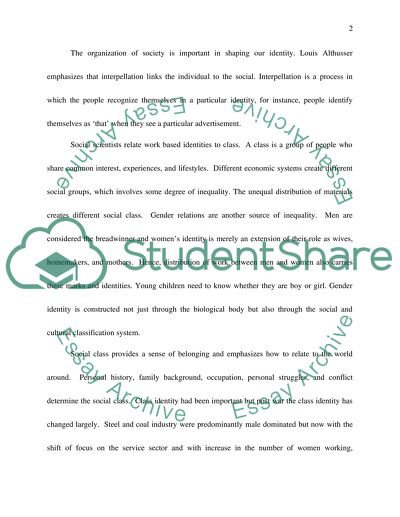Cite this document
(Uncertainty of Identity in Contemporary Society Essay Example | Topics and Well Written Essays - 1250 words, n.d.)
Uncertainty of Identity in Contemporary Society Essay Example | Topics and Well Written Essays - 1250 words. https://studentshare.org/social-science/1535406-part-a-outline-the-argument-that-there-is-increasing-uncertainty-about-identity-in-contemporary-society-part-b-how-much-control-do-we-have-in-shaping-our-o
Uncertainty of Identity in Contemporary Society Essay Example | Topics and Well Written Essays - 1250 words. https://studentshare.org/social-science/1535406-part-a-outline-the-argument-that-there-is-increasing-uncertainty-about-identity-in-contemporary-society-part-b-how-much-control-do-we-have-in-shaping-our-o
(Uncertainty of Identity in Contemporary Society Essay Example | Topics and Well Written Essays - 1250 Words)
Uncertainty of Identity in Contemporary Society Essay Example | Topics and Well Written Essays - 1250 Words. https://studentshare.org/social-science/1535406-part-a-outline-the-argument-that-there-is-increasing-uncertainty-about-identity-in-contemporary-society-part-b-how-much-control-do-we-have-in-shaping-our-o.
Uncertainty of Identity in Contemporary Society Essay Example | Topics and Well Written Essays - 1250 Words. https://studentshare.org/social-science/1535406-part-a-outline-the-argument-that-there-is-increasing-uncertainty-about-identity-in-contemporary-society-part-b-how-much-control-do-we-have-in-shaping-our-o.
“Uncertainty of Identity in Contemporary Society Essay Example | Topics and Well Written Essays - 1250 Words”. https://studentshare.org/social-science/1535406-part-a-outline-the-argument-that-there-is-increasing-uncertainty-about-identity-in-contemporary-society-part-b-how-much-control-do-we-have-in-shaping-our-o.


